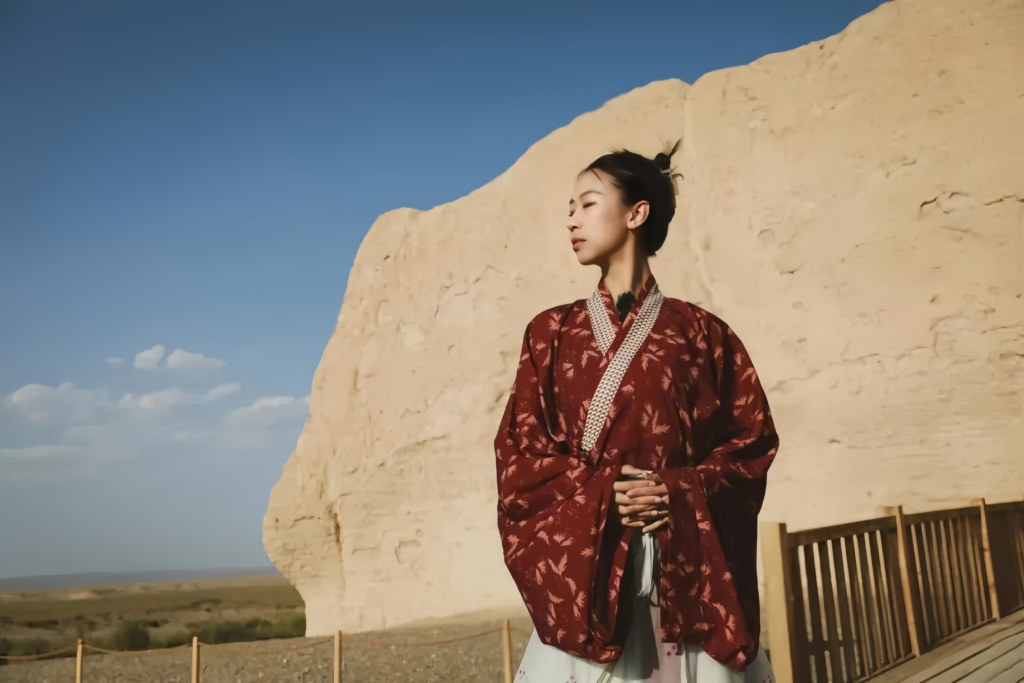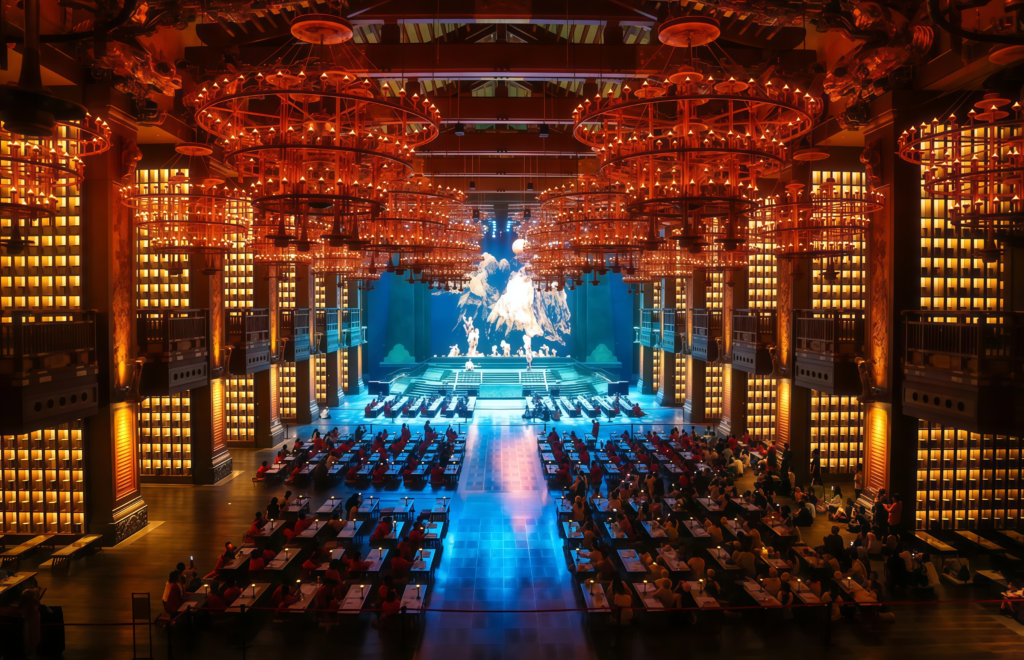Jin Dynasty Hanfu Meets the Dunhuang Silk Road: Journey to the Northwest

Dunhuang and the Silk Road
Dunhuang is the throat of the Silk Road, the intersection of the four great civilizations, and a historical witness of exchanges between the East and the West.
This time, let’s go and see how well the Jin Dynasty Hanfu fits with this brilliant pearl on the Silk Road!
Similarly, at Nishan Sacred Ground, Hanfu transforms into a cultural ambassador dancing with Confucian wisdom. Explore ‘Hanfu and Cultural Heritage: Explore Nishan Sacred Ground, Where Every Snap Becomes a Cinematic Masterpiece’ to learn how to shoot Hanfu masterpieces at historical sites and feel the fusion of tradition and modernity.
Jin Dynasty Style Hanfu: A Flowing Legacy from the Silk Road Era
The Jin Dynasty Hanfu is a top garment (with a waistband, and the length does not exceed the knee) paired with a cross-pleated skirt made of trapezoidal fabric panels. The waistband can either be tucked into the skirt or worn outside. The skirt, known as the cross-pleated skirt, can be solid-colored or composed of mixed colors — also referred to as the “multi-broken-color skirt.”
This traditional outfit, though rooted in history, brings a dynamic, modern visual when set against the vast backdrop of Dunhuang, echoing the cultural diversity once seen along the Silk Road.
The presentation of Jin Dynasty Hanfu in Dunhuang is a brilliant chapter in Hanfu’s history. To delve deeper into Hanfu’s dynastic styles and its role on the Silk Road, refer to the pillar article ‘Guide to Traditional Chinese Clothing – Hanfu,’ which systematically traces its evolution from the Jin Dynasty to modernity.
Yadan Devil’s City: The First Stop

The first stop is the Dunhuang National Geopark.
The Dunhuang Yadan National Geopark, commonly known as the Dunhuang Yadan Devil’s City, is one of the largest Yadan landform distribution areas on Earth.
Here, the wind-eroded landforms contrast strongly with the vast and barren Gobi Desert.
Under the scorching sun, when the wind blows, the hem of the white outer garment lifts to reveal the red underneath — the brightest accent on the Gobi. The Jin Dynasty Hanfu, more flowing than other Hanfu styles, captures the desert wind beautifully: the green edge of the skirt flutters, and the dual-colored ribbons at the waist dance in the breeze.
Each step taken here feels like walking through both nature’s sculpture and a historical passage of Silk Road culture.

When the wind from the northwest blows up the white outer garment’s hem, the red underneath becomes the brightest accent on the Gobi Desert. The Jin Dynasty Hanfu is more flowing than other styles, and when the wind blows, the green edges of the skirt reveal the shape of the wind, while the two-colored ribbons at the waist flutter with the breeze. Every frame is filled with a sense of freedom.


Yumen Pass: The Second Stop

The second stop is Yumen Pass.
The second stop is Yumen Pass, a site long associated with poetry and separation.
Ancient poets like Wang Zhihuan and Cen Shen described the desolation and loneliness of this gateway to the West, where “the spring breeze does not reach.”
To the ancients, crossing Yumen Pass meant stepping beyond Central China into the vast and unknown Western Regions — a crucial node of the ancient Silk Road.
This journey takes you from Little Fangpan City, through the ruins of the Han Great Wall, to Big Fangpan City. Historically, the Silk Road opened and closed multiple times, and with the rise of maritime trade, Yumen Pass gradually faded into silence.


Clad in Jin Dynasty Hanfu, climbing the current Yumen Pass is not only a tribute to tradition but also a striking presence against the desert’s stillness. The white outer layer removed, the red-printed inner garment glows vividly under the sun. In red, green, and white Jin Dynasty Hanfu, you become a living thread weaving through the old fabric of Silk Road history.
Looking at the ravines and the winding walls, one might imagine merchant caravans, bells clinking, passing here over a thousand years ago.

The Splendor of Dunhuang
If you’re lucky, stay for sunset — you might feel the line from Wang Wei’s poetry:
“The lone smoke rises straight in the vast desert, as the long river flows into the round sun.”
“Dun,” meaning great; “Huang,” meaning splendid — Dunhuang, truly grand and glorious. Whether in the ancient poets’ verses, the wind and moon at the desert’s edge, or the millennium-long brilliance of the Dunhuang Silk Road, Dunhuang has it all.





Responses